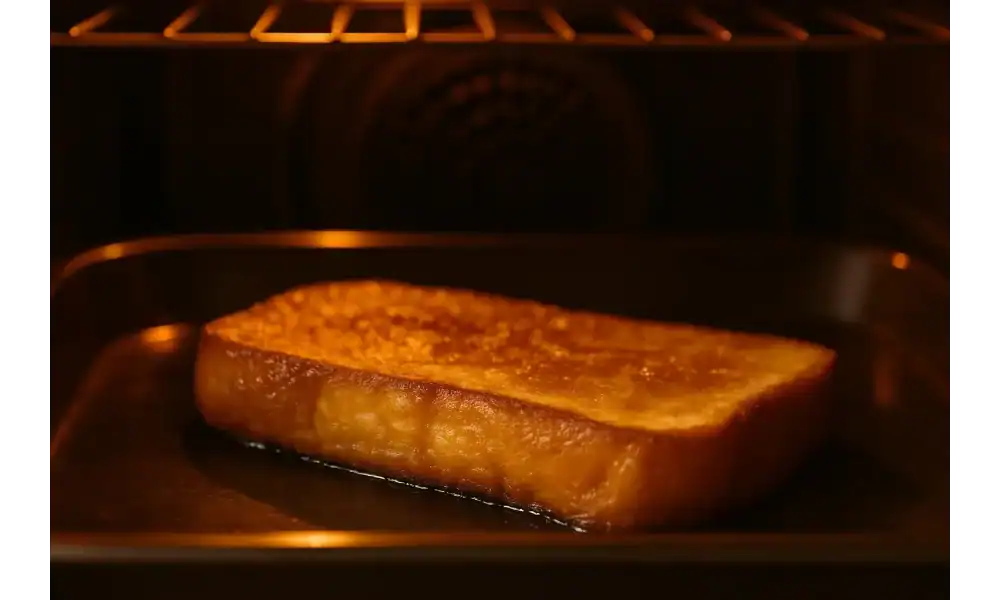Introduction
Pain Perdu and French Toast may look the same, but they tell different stories. One comes from the heart of French cuisine. The other is a beloved American breakfast. Both use bread, eggs, and milk—but the results are surprisingly different.
In this post, we’ll explore the key differences between Pain Perdu and French Toast. You’ll learn about their history, ingredients, and how each version is made. We’ll break down their textures, flavors, and toppings. Plus, we’ll show you how to make the perfect slice at home.
If you’ve ever wondered what makes Pain Perdu and French Toast unique, this tasty guide has all the answers.
If you prefer pastry for your breakfast, here are some recipes you might love to try:
- How to Make the Best Italian Focaccia Bread at Home
- Ciabatta vs. Focaccia: Which Italian Bread Is Best for Your Recipe?
- Classic Sourdough Bread: How to Make the Perfect Loaf at Home
- How to Make Ciabatta Bread with Perfect Airy Holes
- Easy Banana Bread Recipe: A Classic Treat in Just 10 Steps
What Is Pain Perdu? A French Culinary Classic
The Meaning of “Pain Perdu” and Its Translation
“Pain Perdu” means “lost bread” in French. It refers to old or stale bread that would otherwise be thrown away. This dish gives it new life.
Historical Origins in France and Use of Stale Bread
Pain Perdu started in France as a smart way to use leftover bread. French families soaked stale slices in sweet egg custard and fried them to make a comforting treat.
Common Ingredients: Baguette or Brioche, Eggs, Milk, Vanilla
The classic Pain Perdu recipe uses simple ingredients. These include slices of baguette or brioche, eggs, milk, sugar, and a touch of vanilla. Some also add cinnamon or orange zest.
Traditional French Preparation and Serving Style
To make Pain Perdu, soak the bread well in the egg-milk mix. Then fry it in butter until golden. It’s often served warm with powdered sugar, fruit, or even a drizzle of honey.
Pain Perdu as a Dessert vs a Breakfast Item
In France, Pain Perdu is usually eaten as a dessert. But it also works for breakfast or brunch, especially with fruit and yogurt. It’s softer and more delicate than American French toast.
What Is French Toast? The American Twist
French Toast in American Cuisine and Its Evolution
French toast is a popular breakfast dish in the United States. It may have French roots, but Americans gave it their own twist. Over time, it became sweeter, richer, and a brunch favorite.
Common Breads Used: Sandwich Bread, Texas Toast, Brioche
In the U.S., people use different breads to make French toast. Soft white sandwich bread is common. Texas toast makes thicker slices. Brioche adds a rich, buttery texture.
Popular Ingredients: Cinnamon, Vanilla, Nutmeg, Sugar
American French toast tastes sweet and warm. Cooks add cinnamon, vanilla, nutmeg, and sugar to the egg and milk mix. These spices give it a cozy flavor.
American-Style Toppings: Maple Syrup, Butter, Powdered Sugar
Toppings take French toast to the next level. The most popular ones include maple syrup, melted butter, and a dusting of powdered sugar. Some people add fruit or whipped cream.
Served Mostly as a Breakfast or Brunch Staple
In the U.S., French toast is a classic breakfast dish. It’s often served during weekend brunch. You’ll find it in diners, cafes, and home kitchens across the country.
Key Differences Between Pain Perdu and French Toast

Ingredients and Bread Types: Brioche vs Sandwich Bread
Pain Perdu often uses French breads like baguette or brioche. They soak up the custard well and stay rich. French Toast in America usually uses soft sandwich bread or thick Texas toast.
Texture and Taste: Custardy vs Crispy/Sweet
Pain Perdu is soft and custardy inside. It feels more like a dessert. French Toast is often crispy on the edges and sweeter in taste. It has a firmer bite.
Cultural Context: Dessert (France) vs Breakfast (USA)
In France, people enjoy Pain Perdu mostly as a dessert. In the U.S., French Toast is a classic breakfast or brunch dish. Culture shapes when and how each is served.
Cooking Techniques: Soaking Duration, Frying Method
Pain Perdu needs more soaking time so the bread fully absorbs the custard. It’s cooked slowly in butter. French Toast soaks for less time and cooks quicker, often on a hot griddle.
Presentation: Plated Elegance vs Stacked Comfort Food
Pain Perdu is served neatly, often with powdered sugar and fruit. It looks elegant. French Toast is stacked high, dripping with syrup and toppings. It’s bold and comforting.
How to Make Authentic Pain Perdu and Classic French Toast at Home

Step-by-Step Pain Perdu Recipe (with Brioche or Baguette)
Slice stale brioche or baguette into thick pieces. In a bowl, whisk together 2 eggs, ½ cup milk, 1 tbsp sugar, and 1 tsp vanilla. Soak the bread until soft. Heat butter in a pan. Cook each slice until golden on both sides. Serve warm with powdered sugar or fruit.
Step-by-Step American French Toast Recipe (with Cinnamon)
Use thick sandwich bread or Texas toast. Whisk 2 eggs with ½ cup milk, 1 tbsp sugar, 1 tsp vanilla, and ½ tsp cinnamon. Dip each slice quickly into the mix. Cook on a buttered griddle until golden. Top with maple syrup and butter.
Tips on Choosing the Right Bread (Stale Is Better!)
Always use slightly stale bread. Fresh bread gets soggy. Brioche, challah, and baguette hold their shape and soak well. Thick slices work best for both Pain Perdu and French Toast.
Pan Temperature, Soaking Time, and Cooking Tips
Keep your pan on medium heat. Soak the bread longer for Pain Perdu. French Toast needs just a quick dip. Don’t rush the cooking—golden brown takes time. Use butter for rich flavor.
Topping Ideas: Berries, Syrup, Whipped Cream, Powdered Sugar
Get creative with toppings. Try fresh berries, banana slices, or a drizzle of maple syrup. Whipped cream and powdered sugar add extra sweetness. For a twist, add honey or chocolate sauce.
Which One Should You Try First? Taste Test and Final Thoughts
When to Serve Each (Weekday vs Weekend, Dessert vs Brunch)
Serve Pain Perdu as a light dessert after dinner or for a weekend brunch. It feels elegant and slow. French Toast is perfect for a quick weekday breakfast or a cozy Sunday meal. It’s simple and filling.
Flavor Profiles and Preferences (Light vs Rich, Subtle vs Spiced)
Pain Perdu tastes light and creamy. It has a gentle sweetness and soft texture. French Toast is richer, with bold flavors like cinnamon and nutmeg. If you like spices, you’ll love the American style.
Which One Kids Love vs What Adults Prefer
Kids often enjoy French Toast with syrup and butter. It’s sweet, soft, and fun to eat. Adults may prefer Pain Perdu for its lighter taste and delicate texture. Both are family favorites.
Serving Suggestions and Drink Pairings (Coffee, Juice, Hot Chocolate)
Pair Pain Perdu with a latte or hot chocolate. Fresh berries or honey work great as toppings. French Toast goes well with orange juice or black coffee. Add eggs for a full brunch.
Storage and Reheating Tips for Leftovers
Store leftovers in an airtight container in the fridge. Reheat Pain Perdu gently in a pan or oven. Warm French Toast in a toaster or microwave. Both taste best fresh but still hold up well.
American-Style Pain Perdu with Berries and Syrup

American-Style Pain Perdu with Berries and Syrup
Ingredients
Method
- In a bowl, whisk eggs, milk, vanilla, cinnamon, sugar, and salt.
- Dip each bread slice in the mixture for 10–15 seconds per side.
- Heat butter in a non-stick pan over medium heat.
- Cook bread slices 2–3 minutes per side until golden brown.
- Serve warm with berries, maple syrup, and whipped cream.
FAQ: Pain Perdu vs French Toast
1. Is Pain Perdu the same as French Toast?
They are similar but not the same. Pain Perdu is softer and less sweet. French Toast is often spiced and crispier.
2. What bread is best for Pain Perdu?
Use stale baguette or brioche. Thick slices soak up the custard better.
3. Can I make French Toast without cinnamon?
Yes. Cinnamon adds flavor, but you can skip it or use other spices like nutmeg or cardamom.
4. How long should I soak the bread
For Pain Perdu, soak it longer—about 5 minutes. For French Toast, a quick dip is enough.
5. What toppings go best with Pain Perdu?
Try powdered sugar, berries, honey, or a touch of jam.
Conclusion
Pain Perdu and French Toast may look alike, but they each have their own story. Pain Perdu is soft, elegant, and perfect for dessert. French Toast is bold, spiced, and great for breakfast or brunch.
The key differences come down to bread, flavors, and when you serve them. Use brioche or baguette for Pain Perdu. Go for sandwich bread or Texas toast for French Toast. Both taste amazing in their own way.
Try making both at home. See which one you like best. Maybe you’ll enjoy Pain Perdu with berries and coffee. Or you might love French Toast with syrup and bacon.
Now it’s your turn! Leave a comment and tell us your favorite. Don’t forget to pin the recipe and follow the blog for more easy international breakfast ideas.
For more recipes, try our:

